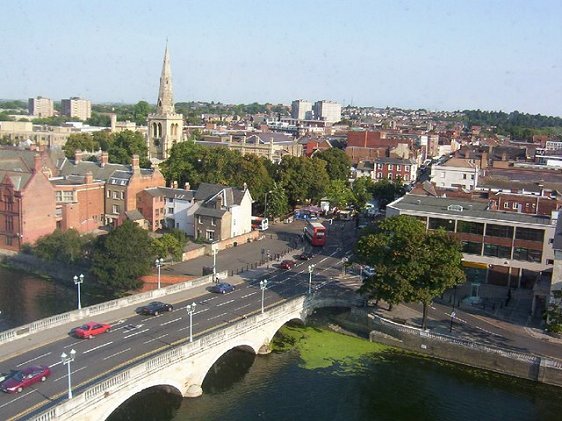Bedford is the county town of Bedfordshire, England. Located adjacent to the town of Kempston, it has a population of 80,000 people (2012 estimate).
 Bedford, England: Source: https://commons.wikimedia.org/wiki/File:Bedford_From_The_Park_Inn_Hotel_-_geograph.org.uk_-_629934.jpg
Bedford, England: Source: https://commons.wikimedia.org/wiki/File:Bedford_From_The_Park_Inn_Hotel_-_geograph.org.uk_-_629934.jpgAuthor: Richard Dorrell

[an error occurred while processing this directive]
The history of Bedford goes back to Anglo-Saxon times. It was named after Beda, a chief of the Saxon tribe, with "ford" referring to a crossing on the River Great Ouse. It developed into a market town by the early Middle Ages.
In the old days, Bedford was a center for the wool trade. This led to it becoming a major lacing-making town by the mid 16th century. The Great Ouse River is navigable as far as Bedford, so this allowed the products to be shipped out.
By the 18th century, brewing has replaced wool as the mainstay of Bedford's economy. Industrialization in the 19th century made Bedford an engineering hub.
 St Peter's Church, Bedford: Source: https://en.wikipedia.org/wiki/File:StPetersChurchBedford.JPG
St Peter's Church, Bedford: Source: https://en.wikipedia.org/wiki/File:StPetersChurchBedford.JPGAuthor: Simon Speed

Visiting Bedford
If coming by car from London, take the M1 motorway until Exit 13 then continue north on the A421 road to reach Bedford.Places of Interest in Bedford
- Bedford Castle Mound: Remnants of Bedford's medieval castle. It is in the heart of town, a short distance from Bedford Bridge.
- River Great Ouse: The river that runs through Bedford. It is lined with gardens called The Embankment.
- St Paul's Church: Anglican church in the town center of Bedford.
- St Peter's Church: Anglican church on St Peter's Street. Within its compound are two ancient monoliths, regarded as some of the oldest architectural remains in Bedford.
 Latest updates on Penang Travel Tips
Latest updates on Penang Travel Tips

Copyright © 2003-2025 Timothy Tye. All Rights Reserved.

 Go Back
Go Back